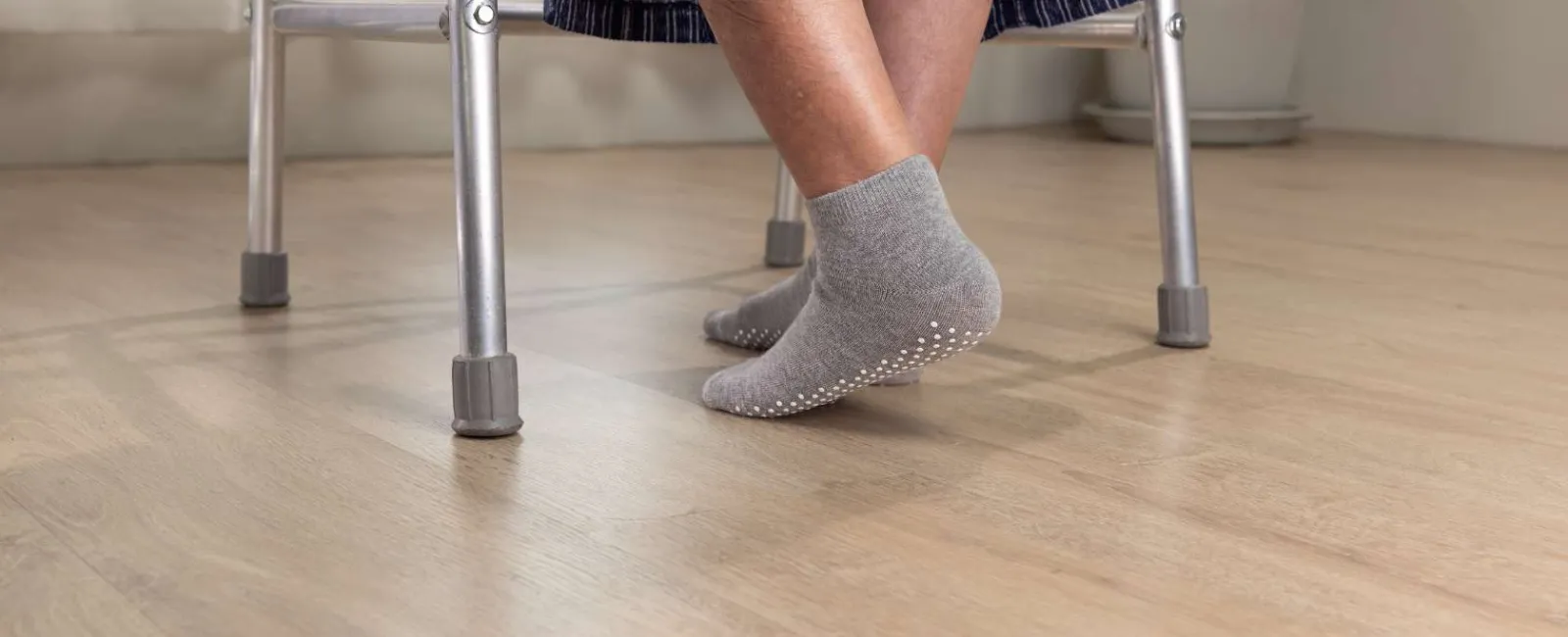As our loved ones age, subtle changes in their mobility and daily activities can signal underlying health issues. One such change is the alteration in the way seniors walk, particularly the development of a shuffling gait. Today we dive into the reasons behind seniors’ shuffling, the potential risks associated with this gait change, and practical solutions to support the elderly in maintaining mobility and safety.
What is Feet Shuffling in Seniors?
Shuffling refers to a form of walking where the feet barely lift off the ground. It is characterized by short steps and a lack of the heel-to-toe motion that defines a healthy stride. This pattern can lead to a decrease in mobility, an increase in fall risk, and a decline in overall health.
Why Do Seniors Shuffle?
Several factors contribute to shuffling in seniors, including:
- Neurological Conditions: Diseases such as Parkinson’s can affect the brain’s ability to control body movements, leading to shuffling.
- Muscle Weakness: Age-related muscle loss can make it harder to lift the feet, resulting in a shuffle to avoid tripping.
- Joint Problems: Arthritis or other joint issues can make full strides painful, encouraging shorter steps.
- Balance Issues: Age can affect one’s balance, leading to a wider stance and shorter steps for stability.
- Fear of Falling: After experiencing a fall, some seniors may adopt a shuffling gait as a cautious approach to walking.
The Risks of Shuffling
Shuffling increases the risk of trips and falls, as feet can catch on rugs, door thresholds, or uneven surfaces. Additionally, this gait can contribute to a decline in physical health, as it is less efficient and can lead to reduced activity levels. Over time, shuffling can also affect mental health, reducing confidence and increasing the risk of social isolation.
Solutions and Support
Addressing the issue of shuffling requires a multifaceted approach:
- Medical Evaluation: A thorough check-up can identify the underlying causes of shuffling. Treatment may involve medication adjustments, physical therapy, or interventions for specific conditions like Parkinson’s disease.
- Physical Therapy: Tailored exercise programs can strengthen muscles, improve flexibility, and enhance balance. Techniques to lift feet properly and safely navigate environments can also be taught.
- Home Modifications: Removing tripping hazards, installing grab bars, and ensuring adequate lighting can make a home safer for someone with a shuffling gait.
- Proper Footwear: Shoes with good support and non-slip soles can make walking safer and easier.
- Assistive Devices: Walkers or canes can provide additional stability for those who shuffle, helping to improve their confidence and mobility.
Promoting Safe Mobility in Seniors
Educating seniors and their caregivers on the importance of maintaining mobility and addressing gait changes early is crucial. Encouraging regular medical check-ups, staying active, and adapting the living environment to meet the needs of aging adults can significantly impact their quality of life.
4 Seasons Home Care of Atlanta Is Here to Help
Understanding and addressing the causes of shuffling in seniors is essential for promoting their safety and well-being. By integrating medical interventions, physical therapy, home modifications, and supportive footwear, we can help our loved ones maintain their independence and mobility for as long as possible. At 4 Seasons Home Care, our commitment is to provide the support and resources needed to navigate the challenges of aging with dignity and grace. Reach out to us if your loved one is in need of support.
